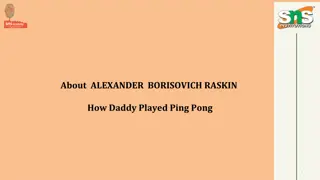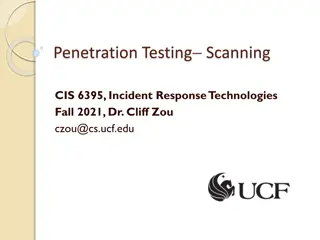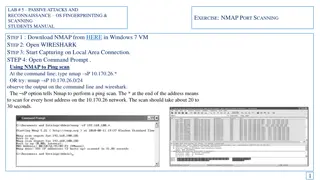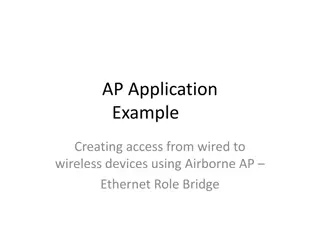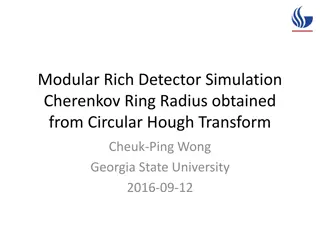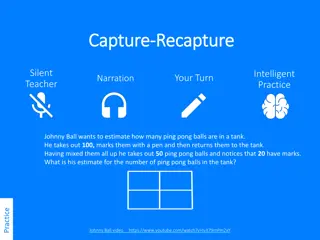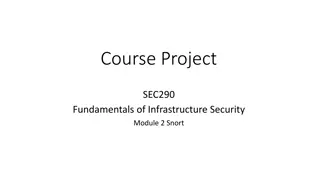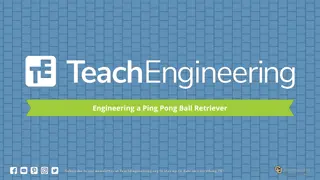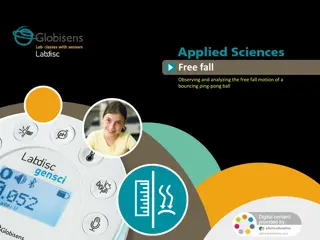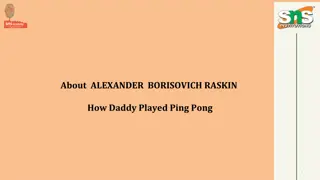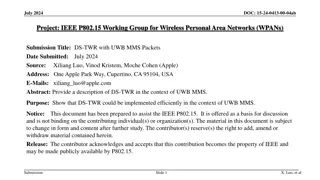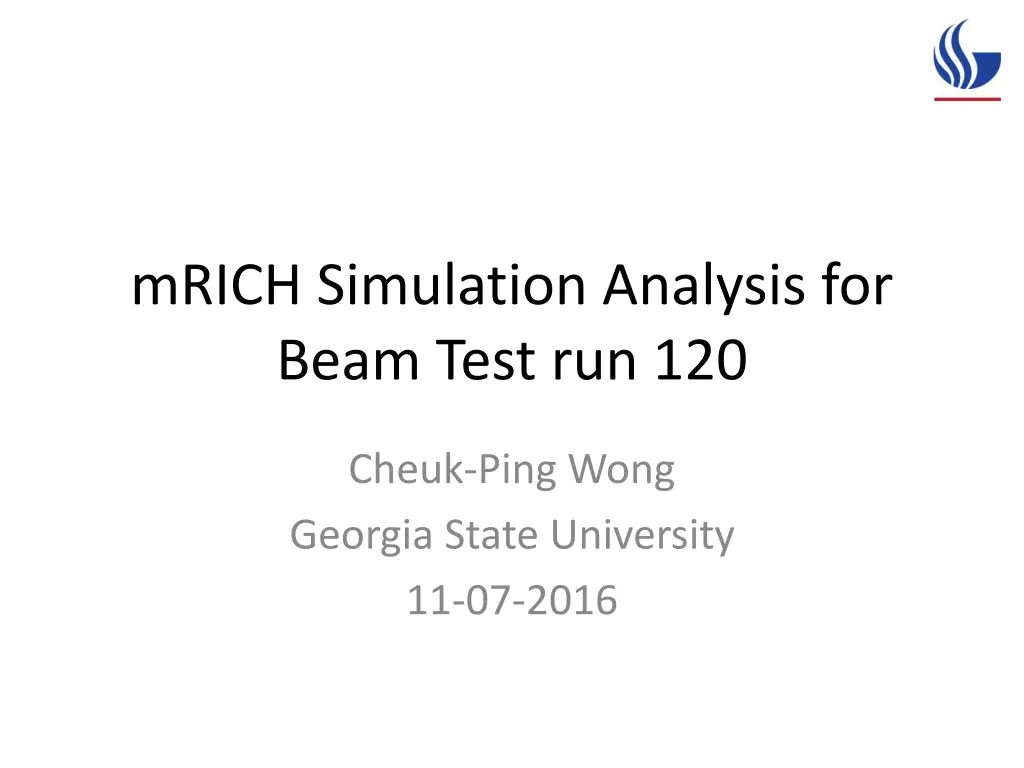
Analysis of mRICH Simulation for Beam Test Run 120
Explore the mRICH Simulation Analysis conducted for Beam Test Run 120 at Georgia State University. The analysis includes detecting expected ring radius and center using simulation, quantum efficiency analysis, and result interpretation. Findings and to-do list for further analysis are discussed.
Download Presentation

Please find below an Image/Link to download the presentation.
The content on the website is provided AS IS for your information and personal use only. It may not be sold, licensed, or shared on other websites without obtaining consent from the author. If you encounter any issues during the download, it is possible that the publisher has removed the file from their server.
You are allowed to download the files provided on this website for personal or commercial use, subject to the condition that they are used lawfully. All files are the property of their respective owners.
The content on the website is provided AS IS for your information and personal use only. It may not be sold, licensed, or shared on other websites without obtaining consent from the author.
E N D
Presentation Transcript
mRICH Simulation Analysis for Beam Test run 120 Cheuk-Ping Wong Georgia State University 11-07-2016
Beam Test run 120 Setup Detector Aerogel gel: thickness 3.3mm, n=1.03 Fresnel lens: f=3 or 76.2mm Beam 8 GeV pion Beam position (x,y)~(-24,-24)mm Rings are not centered, and ring size has not been studied 5/28/2025 Cheuk-Ping Wong (GSU) 2
Finding Expected Ring radius and Ring Center Using Simulation Launch 8 GeV pion at (x,y)=(-24,-24) mm with infinitesimal beam size Quantum efficiency analysis Using Hough transform algorithm with infinitesimal pixel size Ignore the hits that are sit at the corner (due to internal reflection inside glass window, see next slide). If x<-20 and y<-20, ignore. Uncertainty r (0.44 mm) is from simulation with centered ring (beam launched toward the center of sensor plane) If a hit falls between r 3 r of a possible ring, the hit is on the ring applied in Example of a single event from simulation x : signal (photons emitted by pion inside the aerogel) o : noise 5/28/2025 Cheuk-Ping Wong (GSU) 3
Finding Expected Ring radius and Ring Center Using Simulation All found rings in each event are filled in a three-dimensional (a,b,r) histogram The expected values (a,b,r) are from the most densest bin of dimensional histogram extracted the three- All rings found in one run 5/28/2025 Cheuk-Ping Wong (GSU) 4
Result Accumulated hit map Draw from TTree. no Q.E. applied Pixelated display Infinitesimal pixel size Center position (a,b)=(2.5, 2.5) mm Radius r=17.3 mm (6x6mm2 pixel size) / 17.3+3.54=20.84 mm (Infinitesimal pixel size) 5/28/2025 Cheuk-Ping Wong (GSU) 5
To Do List Continue run 120 analysis Reanalyze run 140 (try to reduce noise) Paper for beam test 5/28/2025 Cheuk-Ping Wong (GSU) 6


